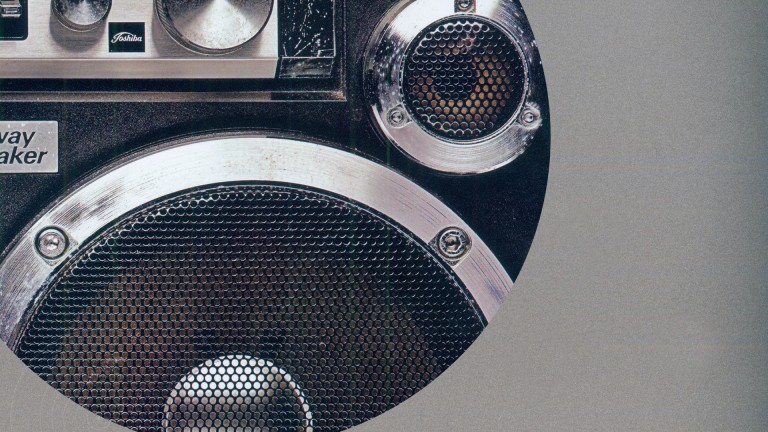From 1981 to 1990: Songwriters and the rise of the Bolognese underground
Various “stars”, creative and catalyst, began to pulsate in Bologna, while the rise of the underground gave the city a new voice, alive and heterogeneous, embracing new wave, punk and rock.
In the early 1980s music, in Bologna and throughout Italy, served as a reaction, as a means of narrating, building and elevating forms of collective conscience. It sought answers to traumatic events such as the terrorist outrages that marked the decade, from the bomb explosion at the Central Station to the Ustica massacre.
Artistic ferment was strong and diversified in the city. The Two Towers of Bologna gave vent to punk, rock, hard rock, metal, new wave and the songwriters’ movement.
Bologna Rock: dalle cantine all'asfalto of 1979 and Electra 1 - Festival per i Fantasmi del Futuro of 1981 helped form the musical identity of the city, raising its national and international status. It was here that the avant-garde emerged of the Skiantos and the sounds of Gaznevada, Windopen, Naphta, Confusional Quartet, Luti Chroma, Balkan Air, Band Aid, Hi-Fi Bros, The Stupid Set and many others.
This experience was fundamental for the development the Harpo's Music label, a nucleus from which emerged Italian Records, Expanded Music, Nice Label and Demo City, all derived from Oderso Rubini, an eclectic and prolific record producer.
Technologies became more accessible. Small recording studios were born, while demos and independent or self-produced EPs, albums and compilations were easier to make. In 1984, with the birth of VideoMusic, video clips exploded in Italy and groups began to make their own productions. The first digital technologies were therefore inserted in their music.
The Bolognese punk and new wave movements joined forces around the Disco d'oro, a record shop founded in 1976 and the lodestar of Bolognese artists. It was here that ideas, groups and events were born.
In 1981, the label Attack Punk Records was created by Helena Velena, one of the leaders of the boycott at the 1980 concert by the Clash and a founder of RAF Punk. After the EP “Schiavi nella città più libera del mondo”, Attack Punk engaged fielded artists, including CCCP - Fedeli alla linea, Irha, Disciplinatha and Stalag 17.
In 1988, part of the Arena del Sole was occupied. This led to the birth of the Isola nel Kantiere, which became an important musical catalyst and contributed to the birth of Italian hip-hop. The squatting in Via del Pratello was also a fulcrum for artistic debate among young people.
The Progetto Giovani of the Municipality of Bologna enabled numerous initiatives, especially live ones. An example was the Centofiori Rock Festival which, guided by Germano Piani, from 1983 related the many facets of the Bolognese underground panorama. It led to the emergence of Danger zone, Rain, Chroma, Cryin' Steel, Disciplinatha, Jack Daniel's Lovers, Urbanfight, Odds, Deus ex machina, Radio City and Tribal Noise, two groups in which Federico Poggipollini, who was to become one of Italy’s most important instrumentalists, took part.
Fonoprint was by now an established studio, attracting artists, productions and professionals. A strong contribution to its birth and development was made by Celso Valli. Initially a keyboard player in the progressive group Ping Pong, he became a national point of reference for arrangements and record productions involving many artists and attracting projects and collaborations to Bologna.
Vasco Rossi had strong and special links with Bologna. “Siamo solo noi”, “Vado al massimo” and “Bollicine”, with which he won the 1983 Festivalbar, were made with Fonoprint. The Stadio linked their artistic development to soundtracks; songs for the films “Borotalco”, “Acqua e sapone”, “Vediamoci chiaro” and “I due carabinieri” were extracted from their albums. They took part in the Festival di Sanremo twice, but unfortunately came last – a hiatus in their ascent on the Italian panorama.
Luca Carboni marked the second half of the decade by publishing his first successes, including “Sarà un uomo”, “Silvia lo sa”, “Farfallina” and “Persone silenziose”.
After the experience of “Banana Republic”, Lucio Dalla published “Dalla” in 1980. Collaborations with Lucio were numerous, whether in full view or behind the wings. In 1983, he expanded his experience by founding the record label Pressing, the first publication of which was the album “Viaggi organizzati”. It was followed by “Bugie”, “DallAmericaCaruso” and the demonstration of such talents as Luca Carboni, Samuele Bersani, Angela Baraldi and Bracco Di Graci.
During the 1970s, Gianni Morandi came and went from the stage. He achieved success again in 1986 with “Uno su mille” and won Sanremo in 1987 with “Si può dare di più”, with Umberto Tozzi and Enrico Ruggeri. In 1988, with his constant friend and with the Stadio, he published the album “Dalla/Morandi”, which gave rise to a highly successful tour.
Francesco Guccini published “Metropolis”, in which he narrated his adoptive city in the intimate, introspective and crude “Bologna”. It was followed by “Guccini”, the live album “Fra la via Emilia e il west” and “Signora Bovary”, which included “Keaton”, written by Claudio Lolli.
Bologna was more alive than ever in these years. It pulsated with artistic energy, heterogeneous and in some ways conflictual, powerful and never disjointed in its forms and influences.
Listen to the playlist

